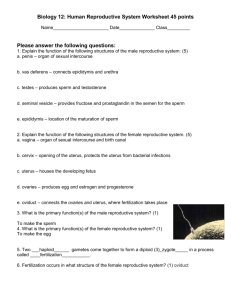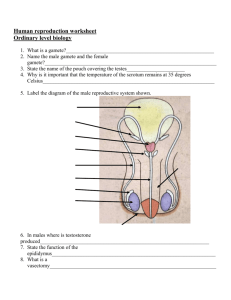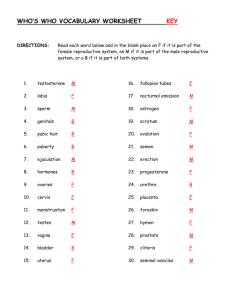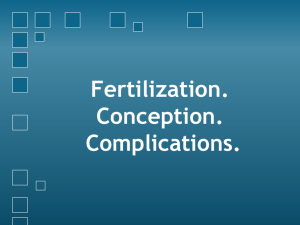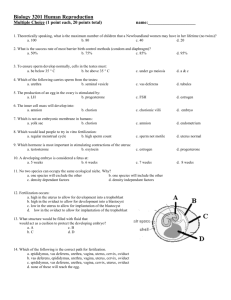2. Male/Female Reproductive System Notes
advertisement
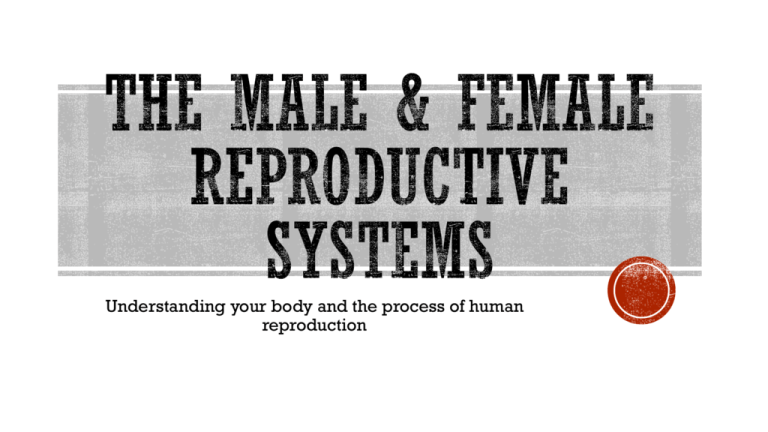
Understanding your body and the process of human reproduction Small, oval-shaped glands located on either side of the uterus. The ovaries produce eggs and hormones. Narrow tubes extending from the ovaries that serve as tunnels for the ova (egg cells) to travel to the uterus Fertilization usually occurs here Hollow, pear-shaped organ that’s home to the developing fetus. 2 parts: the cervix and the main body of the uterus, called the corpus-body develops here. The lining of the uterus that thickens as the egg matures. This brings food and oxygen to the growing baby. Periodic shedding of the uterine lining because fertilization did not occur. Opening to the uterus It dilates to 10 cm to allow a baby to pass through Canal that joins the cervix (lower part of the uterus) to the outside of the body Birth canal 8. 3 PHASES OF THE MENSTRUAL CYCLE: Phase I: Menstruation (Day 1-7): Break down of the endometrium Average blood loss is about ¼ to ½ of a cup. Phase II: Proliferation (Days 7-15): Endometrium replaces itself and increases in size due to the increase in estrogen secretion. Estrogen, FSH and LH, help ovulation take place during this phase (around day 14). Phase III: Secretion (Days 16-28): Endometrium doubles in thickness making the uterus ready to accept a fertilized ovum. Progesterone released. A pair of glands (testicles) that produce sperm and testosterone. A coiled tube where sperm matures (if stretched out, this tube would be 20 ft long!!) Skin covered sack, it contracts and relaxes to move the testes closer or farther away from the body to regulate their temperature Sperm travel into this tube and are stored here until they leave the body during ejaculation or are reabsorbed Tiny organ(s) that also secretes fluid to nourish the sperm Secretes fluid that also nourishes and protects the sperm Sperm and urine leave the body through this tube which passes through the penis The external male sex organ. Comprised of spongy tissue, muscles, veins, fibrous tissue, and the urethra.



